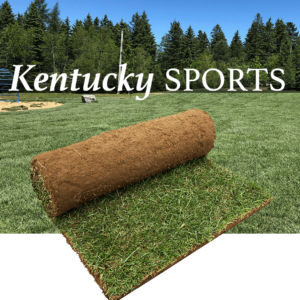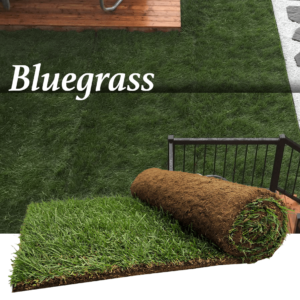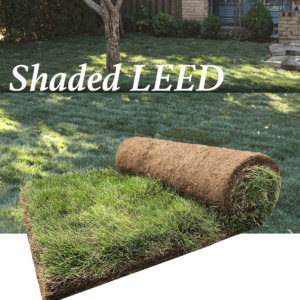Our maintenance guide
It is important to follow certain procedures to ensure that your peat remains flawless
AFTER LAYING THE SOD
If you have the sod installed by our team: water as soon as the installers have completed the project. You should water until the soil is wet (2 inches of wet soil) underneath when lifting. If the team is installing turf for more than one day, be sure to water the already installed section as soon as they leave the first and second day.
If you are installing yourself: We advise you not to wait until you have finished laying the entire lot before you start watering. In fact, the inside of a pallet of grass rolls becomes extremely hot in the summer, and very quickly, which could kill the grass.
WATERING
Watering within 2 weeks after installation is the most important step. The first 2 weeks, watering is 30 minutes per pallet (per section) morning and evening, until the soil is wet to a depth of 4 inches. In times of heat wave, avoid watering the grass in daylight and encourage night watering. If small mushrooms grow on your lawn, don’t panic! This simply means that the lawn has been watered properly. The mushrooms will fall after you mow the lawn once or twice.
Little trick: you can lift a corner of a roll and, if the soil is soaked, it means that it is well watered.
If you took the rooting fertilizer, watering may stop after 2 weeks. If you have not taken a rooting fertilizer, the watering continues morning and evening, 30 minutes per pallet, for 2 more weeks. For the next month, water once a day, preferably in the evening.
It is possible that peat has a “dry” appearance at first sight: it is a normal appearance because it is necessary to differentiate a dry land from a dry peat. Thus, by watering your grass as recommended below, it will become green very quickly.

For the months of JUNE, JULY, AUGUST (the warmest months) you have to water 45 minutes, morning and evening, for 3 weeks. During a heatwave, you should water 1h30 in the morning and evening. Also during heatwaves, you should avoid watering the lawn in broad daylight and rather encourage watering at night.
TRAMPLING/WALKING ON NEW SOD
We recommend avoiding the area of freshly installed turf (avoid stepping on it unnecessarily) in the first 2 weeks, if you have taken the rooting fertilizer, or 1 month without the rooting fertilizer, so that it will take root perfectly. It is important not to walk on a lawn that has been watered, otherwise the leveling can be undone.
ANIMALS
Be sure to quickly remove all animal excrement and water the urine area immediately, otherwise the turf becomes sprinkled with yellow spots caused by canine urine.

FERTILIZATION
We advise you to apply the maintenance fertilizer 3 weeks after installation. The following treatments are then applied every 30 days. The fertilizer should be applied before a rain or, otherwise, you should water your soil thoroughly after applying the fertilizer, as there is a high concentration of nitrogen. Never apply the maintenance fertilizer during a heat wave.
TREATMENT AND WEEDS
Our sod is treated before it is harvested and is free of weeds, but it is still very important to have your grass treated by a professional after it is installed. Preventive treatment will reduce the chance of weeds and insects. The removal of old sod does not guarantee against weeds. Note : it is normal that some weeds grow and must be removed manually.
MOWING
The first mowing of your lawn should be done 1 to 2 weeks after sod installation, never cutting more than 1/3 of the leaf the first time. Subsequently, it is recommended to maintain a height of 3 inches, except for Fescue. In the autumn and spring, mowing at 2 inches is optimal. In times of drought, longer mowing (4 inches) is recommended. In periods of prolonged heat wave, while turf is dormant, it is best to avoid mowing altogether.

MAINTAINING YOUR CEDARS
Watering: The day the cedars are planted, as well as the following 72 hours, water them abundantly, without however drowning them. For the next two months, water the cedars 2 to 3 times a week, for about 1 hour. Thereafter, watering is done once a week. Do not forget that a good rain is considered watering. If you planted your cedars during August or during a heat wave, it is recommended to also water the foliage of the cedars.

Warning! Do not wait for the foliage of your cedars to turn yellowish. It is important to ensure that the amount of water distributed to the roots of the cedars is adequate. The soil should not be waterlogged but should still remain moist.
A little trick: take a handful of soil, and if the water slips between your fingers, it’s a sign that you need to reduce your watering.
Size: Cedars only need annual pruning. Avoid periods of heat wave or great drought. It is important NOT to prune cedars the first year. The following year after planting, start pruning the cedars across the width to prevent them from expanding too much. Do not wait for your cedars to reach the desired height before trimming the sides of them. When your cedars have reached the desired height, start trimming the tip of the plant. This will have the effect of densifying your cedar hedge.





